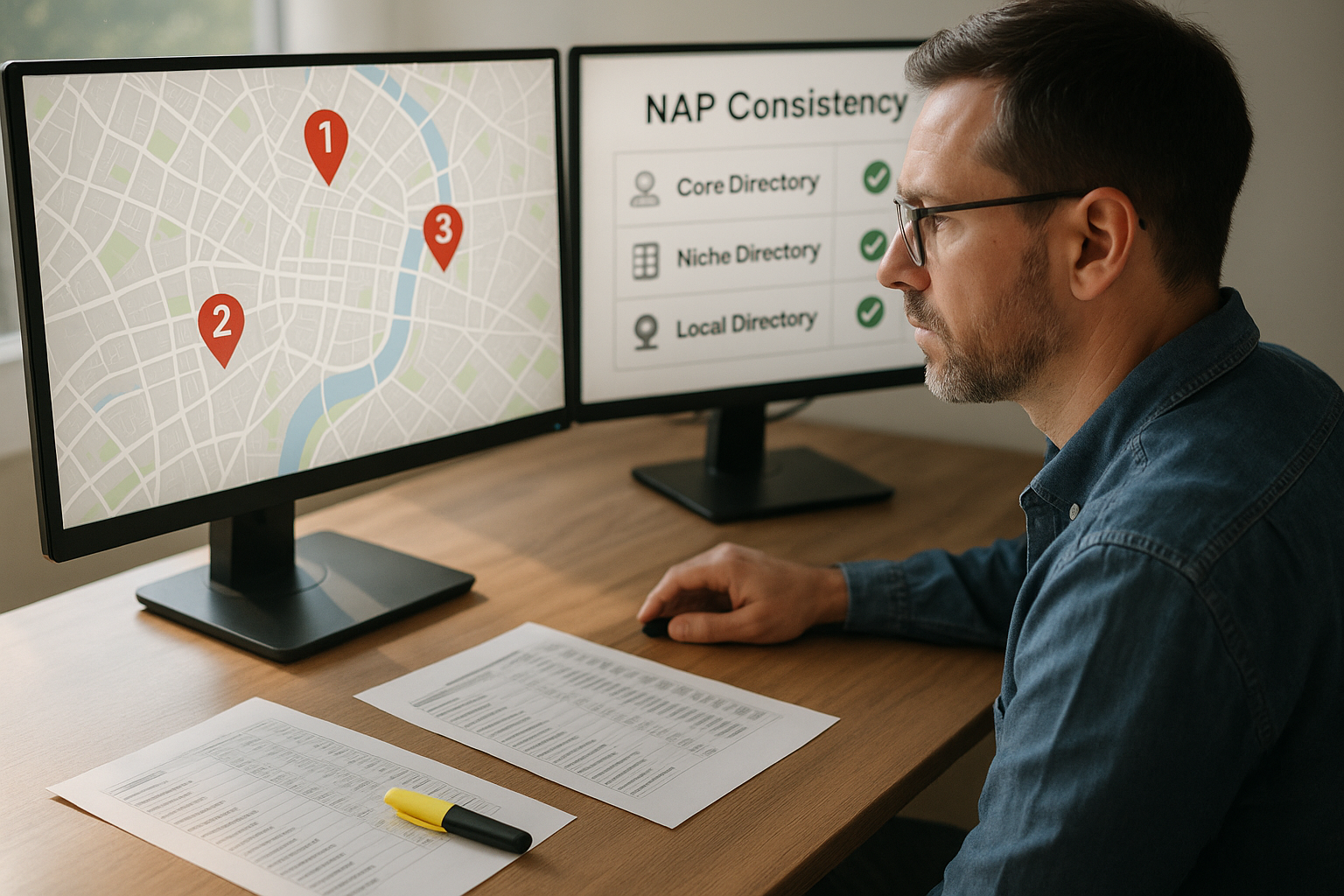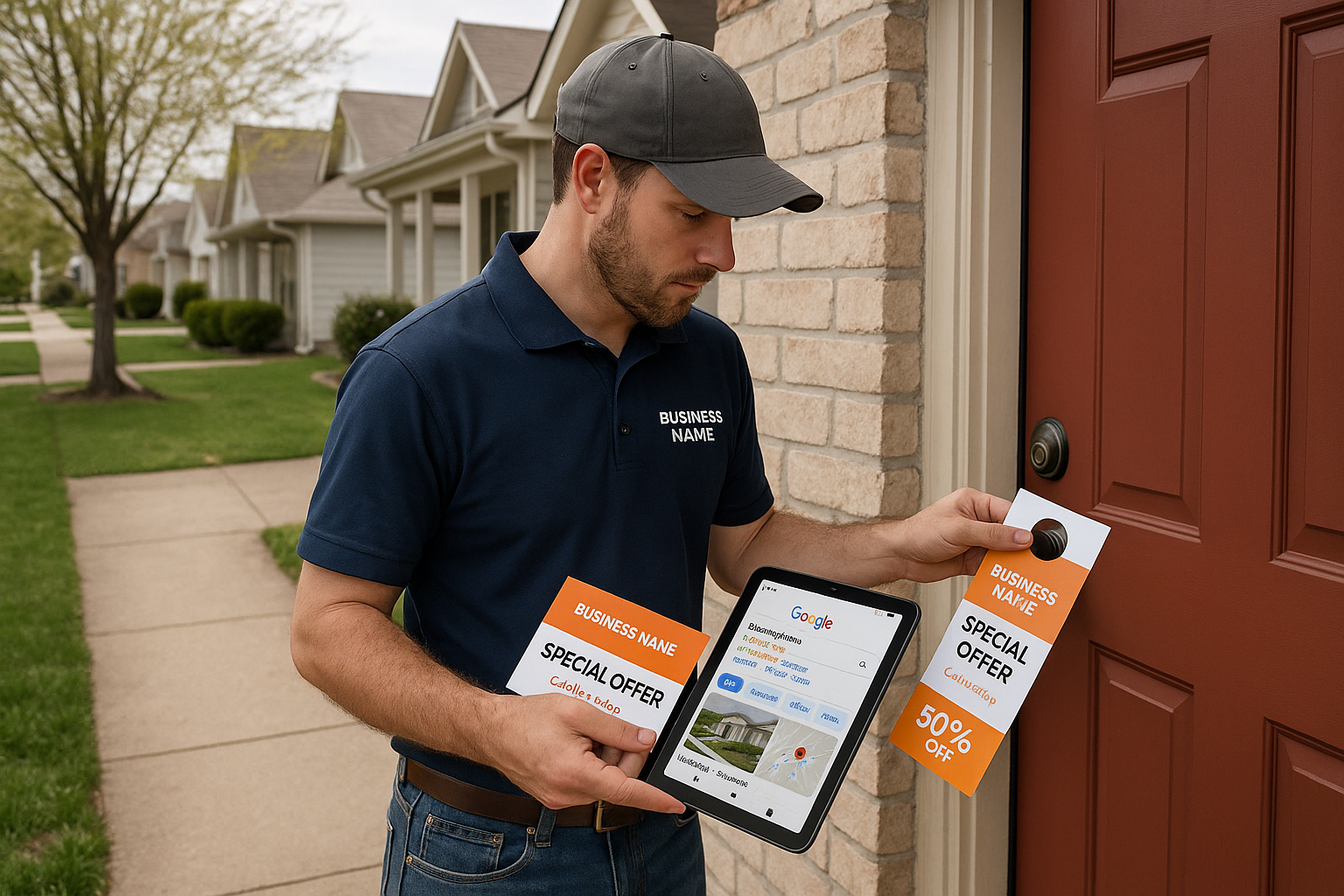Local citations are the spinach your Map Pack rankings secretly need. Not sexy. Not glamorous. Yet they build trust, feed the algorithms clean data, and stop customer confusion. Most small businesses clean up Google, then ignore the rest. That gap costs calls, directions, and credibility. This guide breaks down what citations are, why NAP consistency matters, how to fix messy listings fast, and where to build the citations that move the needle. If you want the full local SEO foundation too, check our primer for small businesses in home services and beyond at Master Local SEO. Take a sip of coffee. Let’s fix your presence across the web before it hemorrhages customers.
What local citations are
A local citation is any online mention of your business name, address, and phone number. You get two flavors. Structured citations live on directories and maps like Google Business Profile, Apple Maps, and industry directories. Unstructured citations are mentions on local news sites, blogs, and associations. Both send signals about your entity. Both help customers find the right phone number and hours. Start with a vetted source list for your country so you do not waste time chasing weak directories. The United States list from Whitespark remains a strong anchor for prioritization at Top Local Citation Sources.
You will also hear three buckets. Core citations mean the big platforms where customers actually look. Niche citations mean industry directories that matter for legal, healthcare, trades, hospitality, real estate, and more. Geo or city citations live on local Chamber sites, city business portals, and local media directories. The mix creates coverage, trust, and redundancy. Think of it as your business card in many pockets.
Why NAP consistency matters
Two groups care about accuracy. Search platforms. Human beings. Both vote with outcomes you can measure.
Google’s rules ask you to represent the business as it is consistently recognized. Use a precise address. Use the correct name. Do not add keywords to your business name. You can read the short version on Google support at Represent your business. Edits go through review. Some changes like address updates can trigger reverification as noted in their edit guide at Edit your profile.
People punish bad data with bouncing behavior. BrightLocal reports frustration when directory info is wrong. That frustration kills calls and bookings. Their trust report lays it out at Local Citations Trust Report. Translation. You lose money if your phone number reads like a Sudoku puzzle across the web.
Where citations fit today
Citations matter. They are not your biggest lever. Think of them as the floor under your rankings, not the ceiling above them. Whitespark’s Local Search Ranking Factors study shows heavier weight on Google Business Profile quality, categories, proximity, and reviews. Citations validate your entity and feed the ecosystem. They still matter for discovery and trust. Just do not expect miracles once the basics are in place. See the study at Local Search Ranking Factors and a neutral summary at Search Engine Land.
The play is simple. Get your citations clean. Build the right ones. Then shift energy to reviews, GBP content, services, attributes, and locally relevant links. You will see a stronger lift from those once your citations stop leaking trust.
Build your Master NAP
You need one source of truth before you touch any listing. Create a Master NAP document that never leaves your team chat or your desk. Lock the business name. Lock the address including unit or suite formatting. Lock the primary phone. Lock hours and holidays. If you have a DBA, decide how you will present it. Keep one primary phone across all listings. Add call tracking numbers as secondary where supported. Pun intended, consistency keeps you out of trouble.
Do not stress about minor formatting differences. St versus Street. Ave versus Avenue. Google accepts some variations. The goal is to crush big conflicts like a wrong number or an old address. Whitespark’s reference on acceptable abbreviations sets expectations at acceptable NAP variations.
Copy this simple NAP style template:
- Official business name as registered. No keywords stuffed in for fun.
- Address with a chosen suite or unit format. Pick one and stick to it.
- Street abbreviations. Choose your style. Use it everywhere.
- Primary phone in one format. Use it as the anchor across platforms.
- Secondary phone only where the platform supports it.
- Hours format. Include holiday rules so staff does not guess on Friday at 4 pm.
Audit and cleanup workflow
Audits save time. Cleanup saves revenue. Do both with a plan. You can work with a mix of manual checks and tools.
Start with a scan to inventory live listings and errors. BrightLocal’s Citation Tracker shows NAP conflicts, duplicates, and competitor gaps. It keeps the mess visible at Citation Tracker. Semrush’s Listing Management can push correct data to many directories and suppress duplicates where possible. It explains supported networks and suppression rules at Listing Management.
Manual checks still matter. Search your brand with your phone number. Search your brand with your address. Find strays. Screenshot problem listings. Triage by impact. Start with Google. Move to Apple, Bing, Yelp, Facebook. Then work through your top ten to fifteen directories.
Handle duplicates with care. For Google, use their duplicate overview to merge or remove the right entry. Keep the listing with history and reviews whenever possible. Google’s updated duplicate and merge guidance lives at duplicate listings.
Big edits can trigger reverification. Changing an address or name can kick off a request with postcard or video. Plan your timing so staff can handle it. Google states this in their edit documentation at edit your profile.
Use this eight step checklist to move from chaos to clean:
- Run a listings scan with a tool. Follow with manual searches for Brand plus phone and Brand plus address.
- Fix Google first. Then Apple. Then Bing. Then Yelp and Facebook. Then your top ten to fifteen directories.
- Resolve duplicates. Merge or remove strays. Keep your verified Google listing as the source record.
- Push accurate data to aggregators. More on those below.
- Build missing core citations from a trusted US list.
- Add niche directories for your industry plus city directories for reach.
- Add structured data to your site. Match footer, contact, and location pages to the Master NAP.
- Re crawl in one to two months. Suppress any new duplicates. Rinse as needed.
Fix core platforms first
Your top five carry outsized weight for both humans and machines. Claim and complete them fully. Fill every field you can. Add accurate hours. Upload real photos. List services. Add a strong description without keyword stuffing. Use the same core data everywhere.
Google Business Profile still drives the most calls and direction requests for most local brands. That is your number one priority for cleanup. Apple Maps matters for iPhone users and Siri. Manage Apple Maps listings through Apple Business Connect. The guide for editing or removing a location sits at Apple Business Connect help. If you need to add a new location, Apple’s how to lives at add a location.
Bing Places feeds Windows search and Microsoft partnerships. If you change your name or address, Bing often recommends creating a new listing and closing the old to prevent feed conflicts. Their help center outlines the approach at Bing Places help.
Yelp and Facebook still influence consumer trust. They also sync into car nav systems and third party apps. Get them right. Keep messaging consistent. Your future customers will notice the polish without you bragging about it.
Use data aggregators
Think upstream. Aggregators feed large parts of the local web. Bad data from upstream sources can bleed back into maps and directories months after you fix a listing by hand. In the US the main players are Data Axle and Neustar Localeze. Factual merged into Foursquare. Many industry lists still reference the old name. Whitespark maps the flow at Local Search Ecosystem and the Factual merger announcement sits at Foursquare news.
Push your Master NAP to these sources once you fix core platforms. That step reduces data drift. It also cuts down on repeat cleanups later. Your future self will send a thank you note.
Core citations to grab
Build a lean set of core citations that real customers see. Aim for quality over volume. A focused list for the US often includes Google Business Profile, Apple Business Connect, Bing Places, Yelp, Facebook, Better Business Bureau, Dun and Bradstreet, TomTom, HERE, YellowPages, regional Chamber sites, and a major local media directory. For a broader vetted list use Whitespark’s United States page at Top 50 US citation sources.
Fill every field you can on each platform. Match the Master NAP. Add service areas if relevant. Add product or menu data where supported. Strong profiles convert better. Clean data builds confidence before anyone reads reviews.
Niche citations that drive leads
Niche directories still send qualified traffic. They also train algorithms on your entity category. Start with an evergreen hub that catalogs industry sources. BrightLocal maintains an industry resource at Industry citation lists.
Want a concrete example. Legal professionals should prioritize Avvo, FindLaw, Martindale, Justia, Nolo, and Super Lawyers. A current rundown of legal directories from Clio gives a clear view at best lawyer directories. Home services brands can look at Angi, Thumbtack, and HomeAdvisor. Restaurants should use OpenTable and Tripadvisor. Then add more from the industry hub without turning your presence into a spam buffet.
City citations that build relevance
Local relevance wins clicks. Your Chamber of Commerce, city business portal, and respected local media directories help. BrightLocal maintains a curated set for one hundred US cities. Pick the ones for your market at US city citation lists.
Grab five to ten quality city sources. Examples. For Miami, target the Greater Miami Chamber, City of Miami business listings, Miami Herald business directory, and county business resources. For Phoenix, use the Greater Phoenix Chamber, the City economic development listing, and Phoenix Business Journal directory. For Chicago, pick the Chicagoland Chamber, Choose Chicago partner listings, and a trusted neighborhood business association. You do not need fifty of these. You need the credible ones your customers actually use.
Service area businesses tips
Work from a home office. Serve customers at their location. You can still build citations without exposing your home address. Many directories support hidden addresses for service area businesses. Whitespark maintains a living list at hidden address sites.
A few quick rules. Only show an address if customers can visit during stated hours. No coworking or virtual office unless staffed. That violates platform rules and risks suspension. You can read current community notes on this topic in the Local Search subreddit at r localsearch. Use service areas on Google Business Profile to show coverage. Keep every other field complete. Photos. Services. Attributes. Strong content still wins.
Mark up your site NAP
Your website should match your listings. Use a consistent NAP across the footer, the contact page, and any location pages. Add LocalBusiness structured data using JSON LD with your name, address, phone, hours, geo coordinates, and location page links. Google’s documentation gives the fields and examples at LocalBusiness structured data.
Tighten your location pages while you are in there. Map service intent to each page with focused queries for your city or neighborhood. Our guide on keyword mapping for local pages breaks down a simple process at How to Choose the Best Local Keywords. Add short FAQs that mirror customer questions. Use internal links to connect locations to services. Small moves. Real gains.
Measure impact and next steps
Citations do not shout. They quietly remove friction. Measure progress with signals that reflect fewer conflicts and more calls.
Leading indicators include the number of duplicate flags going down, successful edits across Google, Apple, Bing, Yelp, and Facebook, active sync status on aggregators, and live status on directories. Outcome metrics include calls and direction requests from Google, Map Pack coverage across your service area, branded clicks, and growth in non brand clicks for service plus city queries. Pull impression data for key combos in Search Console. You can watch for lift in categories where your citation coverage expanded.
Once your presence is clean, put heavier effort into reviews, GBP content, services, and locally relevant links. If you want the why behind link building for local, we break it down at How Backlinks Boost Your Local SEO Strategy. Industry experts continue to report a shift toward quality over quantity for citations. BrightLocal’s expert survey summarizes that trend at expert citation survey.
Accuracy also helps voice results where assistants read your hours and phone number aloud. If a voice assistant quotes last year’s holiday schedule, you lose the sale. For a forward look at this topic, read our guide at Voice Search Marketing.
Practical playbook recap
Local citations anchor trust. NAP consistency stops data drift. Start with a Master NAP and a simple style guide. Audit what exists with a mix of tool scans and manual searches. Fix Google, Apple, Bing, Yelp, and Facebook first. Push clean data to Data Axle and Neustar Localeze. Note that Factual folded into Foursquare. Build a lean set of core citations. Add industry directories that real buyers use. Add a handful of city sources that carry real local weight. Mark up your site with LocalBusiness JSON LD. Match your footer, contact page, and location pages to the Master NAP. Measure progress with calls, directions, Map Pack coverage, and growth in non brand clicks. Then pour energy into reviews, GBP content, and local links.
One last note for multi location brands. NAP at scale can get messy fast. Governance beats heroics. Build a central source of truth. Standardize suite formatting. Standardize phone formats. Standardize hours rules. Set a change log. If you need a cheat sheet for this, read our playbook on the topic at multi location marketing challenges.
Citations will never win a beauty contest. They will help your phones ring. Consistency makes you look legit. Clean data makes you easier to buy from. That is how you climb the Map Pack without theatrics. If you want a partner to run the audit and cleanup for you, Rep Lock Marketing lives for this kind of tidy work. We will bring the coffee. You bring the messy spreadsheet.






